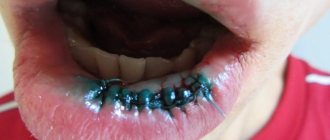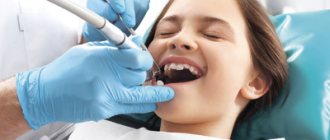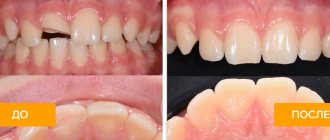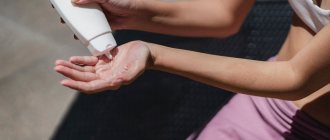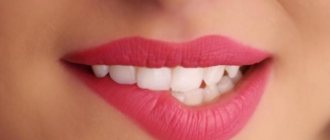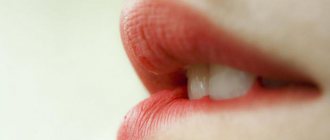One can only envy the activity and curiosity of young children. While learning about the world around them, children often injure their knees, palms, and fingers. But most often the face suffers: a child, falling to the ground, due to insufficiently developed coordination, does not always have time to put his hands in front of him, which should hold his body at that moment. So it turns out that as a result of a fall, even the most harmless one, the baby’s nose, forehead or lip suffers. As a rule, these injuries are not terrible, but you need to be able to treat them and reduce pain. Therefore, let's try to understand the question, if a child breaks his lip from the inside and it is swollen - what to do in such cases?
First aid for parents
The lip is a very delicate part of the human body. Under the thin skin of the lips there are a huge number of small capillaries, which even with the slightest injury bleed heavily. A child can break his lip anywhere: he can trip and fall, hit a door frame while running enthusiastically, fight with a peer over a toy, etc. Of course, your own child’s broken lip is not a sight for the faint of heart. But a parent must be able to cope with their emotions, remaining calm and confident. But what should be done if a child has such an injury?
- If a child breaks his lip on the street, the wound should be blotted with a clean bactericidal wipe or a regular handkerchief. Before treating a wound, be sure to wash your and your child’s hands and treat them with an antiseptic to reduce the risk of infection of the wound.
- At home, the wound on the lip should be washed with slightly warm water. If there are grains of sand or particles of earth on the wound, it is important to carefully remove them with a stream of warm water.
- Treat the wound with hydrogen peroxide, even if it is located inside the lip. To do this, soak a cotton swab in a disinfectant and apply it to the damage for a few seconds.
- You can disinfect the oral cavity if the child rinses it with a solution of the drug Miramistin or chamomile infusion. If the baby does not yet know how to do this, apply a cotton pad soaked in one of these products to the wound.
- Instead of antiseptic drugs, you can use natural honey - it copes well with germs and heals small wounds. However, it is better to lubricate the child’s lip with sweet medicine at night so that the baby does not feast on it.
- If you have successfully stopped the bleeding, inspect the injury both inside and out: the lip may look swollen. If so, apply a cold compress to it.
- It is not recommended to use brilliant green and iodine to treat a wound on the lip, since these products can damage the delicate skin of the organ, and iodine will contribute to the resumption of bleeding.
- If your lip is severely broken and you find a fairly deep wound, it is better to rush to the trauma department or call a doctor at home. Your baby may need stitches.
If a child manages to break his lip, do not scold him for his carelessness and clumsiness. Show how much you love your baby, be confident in your actions, don’t panic. Feeling parental support, the baby will quickly calm down, and only a slightly swollen area on the lip will remind of the past injury. And remember: if a child’s temperature rises due to an injury, the frenulum, teeth or gums are severely injured, and the wound is deep or completely through, do not hesitate to visit a doctor - doing it on your own in this case can lead to irreversible consequences.
What to do if a child swallows a coin?
What to do if a child gets his finger caught in a door?
What to do if a child has been bitten by a wasp: first aid
Not Recommended Actions
What not to do if a child has a cut lip:
- Use alcohol solutions. Some parents, even knowing the rules of first aid after a cut lip, use alcohol solutions to speed up wound healing. However, they do not know what the consequences may be after such actions. If you still make this mistake, then urgently treat the damaged area with anti-burn products,
- or its derivatives (Betadine) or brilliant green to treat the wound Many parents are not familiar with the rules of first aid after a cut lip, so they use medications that can harm the child. For example, iodine or its derivatives (Betadine) or brilliant green are often used to disinfect a wound. These solutions, even in minimal concentrations, can damage the delicate skin of the lips and cause chemical burns. In addition, after treating the lips with brilliant green or iodine, a scar may remain on the damaged area,
- Apply ice without a protective coating. Other moms and dads apply ice without a protective coating, which can cause additional tissue damage or hypothermia. The ice must be wrapped in a cloth and kept for no longer than 15 minutes,
- Touch the wound with unwashed hands. Many parents panic so much at the sight of a child with blood on his lips that they completely forget to wash their hands before treating the wound. Then the risk of infection in the damaged area increases, especially if the wound is located on the inner surface of the lip.
Caring for a split lip in the following days
Naturally, a one-time treatment of a lip injury is not enough for it to heal without consequences. You need to take care of the wound until it heals completely. How to do this correctly?
- Apply calendula ointment, Bepanten or zinc ointment to your lip 3-5 times a day.
- Make sure that the child does not tear off the crust that has formed on the wound with his teeth or hands.
- Treat your baby's lip inside and outside with furatsilin solution by moistening a cotton pad or swab with it. To disinfect an injury, treat it with Miramistin.
- Before going outside, lubricate your child's lips with an emollient, such as chapstick or propolis-based ointment.
- If the wound is located from the inside, you need the baby to rinse the mouth with chamomile infusion 4-6 times a day. Small children need to make lotions from the same infusion.
If your lip is severely broken and requires stitches, your surgeon will tell you about further care for the injury. It is imperative to follow his recommendations to reduce the risk of wound infection.
When to see a doctor
A child's split lip can be healed at home. However, there are a number of situations in which you cannot do without visiting a specialist’s office.
You should consult a doctor if:
- the wound is very deep or located on the inside;
- gums, teeth or frenulum have also been injured - you cannot do without communicating with a dentist, who will be able to determine the consequences of the blow, prescribe special medications or carry out the necessary manipulations;
- an increase in temperature above 37 and 5 degrees in the next two days after the injury - it is possible that infection has occurred, now it is necessary to engage in special therapy;
- bleeding does not stop for more than half an hour, even if it is a small ooze of blood;
- there is a possibility of a foreign body;
- loss of sensation in the area of injury;
- the presence of prolonged swelling and hyperemia that does not go away;
- Cosmetic defects arose as a result of the injury.
How to protect your child from lip injury?
Even an adult can break their lip, let alone children. But you can still reduce the risk of injury. For this:
- Explain to your child the rules of behavior while walking, on the playground, near swings, horizontal bars and carousels;
- Buy comfortable shoes for your baby with stable, non-slip soles and fastening fasteners;
- remove from children's clothing all parts that can get caught on surrounding objects and cause injury to the child;
- always put on protective equipment for your child (helmet, knee pads, elbow pads) if he is skating, cycling, skateboarding or scootering;
- always look after your child;
- do not leave the baby alone at home if the windows are open;
- always put sharp objects out of reach of the baby;
- In a car, transport your child only in a child seat;
- Fill your first aid kit with all the necessary first aid supplies for injuries.
A child can fall and break his lip at any age and even with the most vigilant supervision of parents - alas, no one is immune from this. Therefore, it is worth preparing for possible emergency situations, and if this happens, meet it fully armed. Remember that your composure, confidence in actions and care will quickly return the baby to its previous activity.
Comments ()
Eyebrow cut. How to help with an injury?
When an eyebrow is cut, parents are often frightened by heavy bleeding, accompanied by swelling and hematomas. A cold compress will help relieve swelling, and the wound should be washed with hydrogen peroxide to eliminate the risk of infection and stop bleeding. When the cut is small, you can get by with brilliant green and a bactericidal patch. But in the case of a large abrasion, the help of a surgeon is required to apply a suture. In addition, if the wound is heavily contaminated (for example, the eyebrow was cut by a blow from a stone or due to a fall from a bicycle), it is necessary to determine whether it is worth getting a tetanus vaccination.
Signals when you need to call 03 immediately
- If a small child falls and “passes out” (it must be said that infants almost never lose consciousness even with a severe concussion)
- If you see significant damage (for example, there is an open wound on the head)
- If a child rolls his eyes, he has a seizure
- If he suddenly turns pale, cold sweat breaks out
- If he cries too much, an irritated note can be heard in his voice
- If regurgitation resembles a fountain (vomiting)
- If, some time after the fall, his temperature rises sharply, he becomes very lethargic and drowsy.
- If the fontanel has become convex
All these are signs of a concussion and possible serious consequences of a fall, so you must call an ambulance as quickly as possible, and carry out further treatment in a hospital under the strict supervision of doctors.
Loud crying, taken alone without the other symptoms listed above, is not a criterion that a child’s injury is serious. If the height from which the baby rolled is not higher than the sofa, and there is a carpet on the floor, there is a high chance that the baby was simply very scared - and expresses this by crying.
How to get rid of swelling and hematoma
If your baby has a bump or bruise on his forehead, but quickly calms down after crying, the fall most likely did not cause serious harm to the baby. Therefore, the mother’s task is not to grab the phone to call an ambulance, and not to allow swelling to develop at the site of the impact. To do this, apply cold to the site of the “bump” or hematoma. Ice wrapped in a towel should be applied to the sore spot for 15-30 seconds and then removed, allowing the tissues to “rest.” You need to apply ice for 5-10 minutes, this will help reduce swelling and prevent a really impressive “bump” from developing. And of course, it is worth scheduling a visit to your doctor (pediatrician, neurologist, traumatologist). You don’t have to run to him right away tomorrow, but it’s worth coming for an examination in the next few days after the fall and reporting what happened.
Nose injuries. What to do if a child breaks his nose?
Until the age of 7, nasal cartilage is very soft and does not really break down. Over the years, the nasal septum becomes hard, and even with a small blow, a fracture is possible. The frontal arches and nose are the areas that swell the most after a blow, swelling and bruising appear, so you must immediately apply ice to the bruised area. Swelling and hematomas last for several days and make it difficult to assess the degree of injury and deformation.
In order to avoid improper fusion of bones when a child has a nasal fracture, you should definitely show it to an otolaryngologist, who will order an x-ray and conduct an examination, establishing the type of fracture (displaced, non-displaced) and the severity of the edema. After the examination, the doctor will make an accurate diagnosis. The child may need surgery, which will be done in 5-7 days when the swelling subsides.
When choosing a hospital, ask where operations are performed under general anesthesia. If a hospital provides general anesthesia, it means that there is a specially trained anesthesiologist on staff, and doctors will be able to perform the operation efficiently and comfortably for the child.
When a child’s bruises do not go away for a long time (or appear on their own for no apparent reason), it is necessary to undergo an examination. It is possible that the baby has platelet dysfunction - this disease is often inherited, and a geneticist can determine it by DNA analysis.
